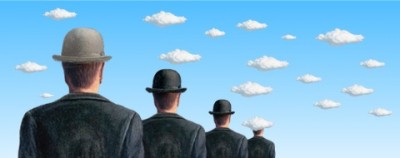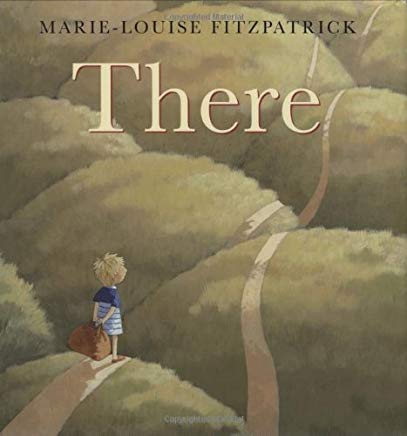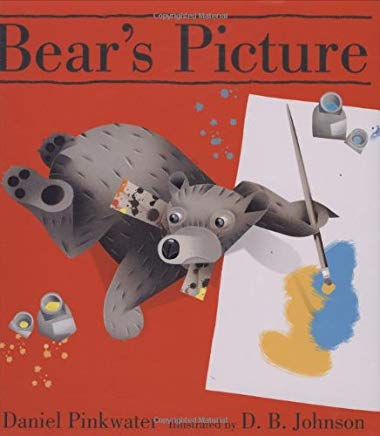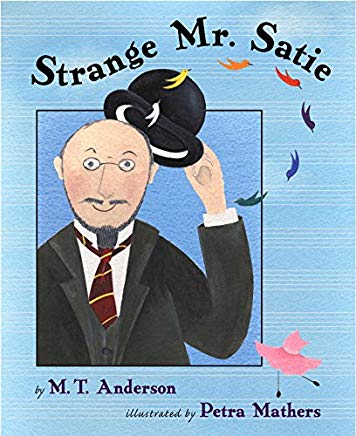The Blog
Blog Entry
Men in Black

By what is probably a coincidence, I’ve been reading a lot of books lately featuring fine, proper gentlemen – with top hats and bowler hats and sensible shoes; these guys never come off very well. This is a mercy – in children’s books anyway – because we’ve got the rest of our lives to get screwed by sharp dressers. In Marie-Louise Fitzpatrick’s There, a man in a suit gets dragged by his umbrella across the sky toward, well, wherever it is we go when we grow up. In fairness, a lot of other people are blowing There too, and there are hypothetical dragons also looming, and winding, inscrutable alleys, though nothing proves quite so foreboding as the fop in the clouds who still can’t be moved to pull his head out of the paper.
Then in M.T. Anderson’s and Petra Mathers’ Strange Mr. Satie, there are everywhere administrators in black hats making life miserable for the childlike musician: look, there is one grimacing, one covering his ears, one delivering a failing letter F on a silver platter. That another such gentleman is openly cuckolded by a youthful Satie offers only temporary solace; pretty soon the artist suffers breakdowns, returns to school, and generally hopes to make a better life:
“When he graduated, he dressed like a man in an office. He always carried an umbrella and wore a bowler hat, and looked, people said, like he could not be more normal.”
This is finally futile, of course, and a little bit heartbreaking: the artist who knows that something is wrong with him, and tries to act his way out of it. No such misgivings interrupt the completion of Bear’s Picture by D.B. Johnson and the redoubtable Daniel Pinkwater (of The Big Orange Splot and many other anarchical fables) who seem intent on spending whatever creative capital they have earned elsewhere. Here is art for art’s sake – orange squiggles and impulsive rainbows – and here are two critics (“Nobody can tell what it’s supposed to be,” complains one) whom we and our kids are presumed to mistrust as relics from an age of unenlightenment. They actually end up submerged in all of Bear’s colors, their imperious black hats bobbing alarmingly on the surface. So long grandpa! Don’t let the twenty-first century hit you on the way out!
And yet: have you ever gone wandering in a modern museum, and there’s this cranky old man too regularly intersecting your path across video installations about raindrops falling in puddles and people mutilating themselves, and the guy keeps cranking and sputtering, “You call this art?” – apparently in your direction, because of course there’s no one else there?
And you think, no. Not really. But you’d rather not belong to his cranky little club. How much of any collection is just posing, you wonder, and how much is genuinely felt? How much aspirational? The wide open mind is a gift that takes nurturing probably, and reading stories, and listening to alternative points of view, but nobody’s ever made a difference in this world who did not learn to speak that mind a little first.




